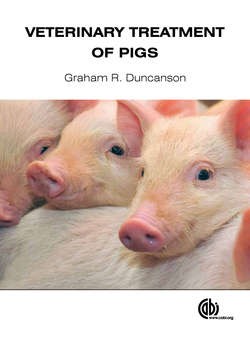Читать книгу Veterinary Treatment of Pigs - Graham R Duncanson - Страница 106
На сайте Литреса книга снята с продажи.
Non-productive days
ОглавлениеRealistically, the main target to improve the farrowing index is to reduce the number of non-productive days. The factors to concentrate on are:
• To avoid any delay after weaning for the sow returning to oestrus (e.g. thin sows or poor boar exposure).
• To avoid missing a service. Services may be missed if the sow actually comes on heat in the farrowing accommodation or if there is poor oestrus detection.
• To avoid sows returning to service at the normal/expected time. This is easy to say but very hard to prevent. Obviously there may be a pathogen involved (see Chapter 10), which will need addressing after a diagnosis, but this is unlikely if the return is at the expected time. There may be a poor service environment. Timing of service is important whether this is natural service or AI.
• To avoid sows having a return to service at a longer time than expected. This is most likely to be caused by a pathogen. A diagnosis and a treatment plan is then a priority.
• To avoid culling or dying. This is a crass statement but actually with careful planning this is possible with various disease control strategies, e.g. reducing lameness by attention to the flooring, reducing deaths by vaccination. It is therefore very important that the reason for culling is recorded and obviously with any deaths the reason is recorded.
